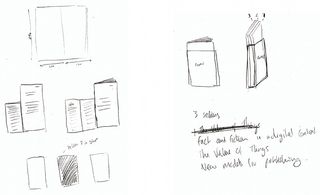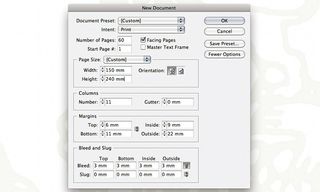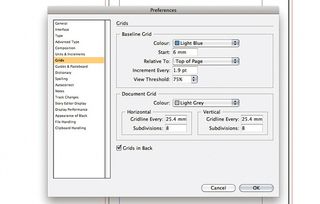Get onto Windows Phone 7
Windows Phone 7 is on the up, or so it seems. We investigate the opportunities for app developers on Microsoft’s answer to iOS and Android
When Nokia proudly unveiled its Lumia 800 handset in October, the Finnish mobile giant heralded it as “the first real Windows phone” – a bold claim with which Microsoft’s other hardware partners, HTC and Samsung, may well have taken issue. Regardless of your take on the Lumia, however, no one can ignore the significance of Nokia’s move away from its own Symbian OS towards Microsoft’s. In terms of global volume at the very least, WP7 could become a genuine contender to iOS and Android.
But what does this mean for app designers, and will we see a surge of independents into the comparatively tiny Windows Phone 7 Marketplace? “Nokia’s involvement has definitely changed the game,” believes James Morse, creative director at Matchbox Mobile, whose experience designing for every conceivable smartphone platform – including Palm OS, Symbian, iOS, Android, Blackberry, Zune and most recently WP7 – makes him well placed to comment.

Morse reveals that the Brighton-based app developer, which counts Microsoft, AT&T and T-Mobile USA amongst its clients, has seen a particularly large increase in WP7 interest from designers, agencies and content owners over the last year. “They sell 80 million smartphones a year,” shrugs Blint Orosz, co-founder of Distinction Ltd, underlining Nokia’s undeniable global clout. “Even if they shrink to 50 million, that still matches the number of iPhones sold in 2010. It may not become the largest platform, but number three with a huge user base is where one can start monetising apps.”
Founded two years ago, Distinction now has 10 employees and develops for both iOS and Android, but specialises in WP7, working closely with both Microsoft and Nokia. “We use a different method than most,” Orosz admits. “Rather than planning, wireframing and then applying chrome, we plan the ‘feeling’ of the app first, using a very detailed – sometimes animated – prototype of a specific screen, which is likely to be used the most. We then build the app around this.”
In most cases, of course, the ingredients of a great app don’t change hugely between platforms – simple, engaging and designed with the user in mind. But there are various Windows Phone 7 quirks that it’s important to bear in mind as a designer.
“On Windows Phone, there’s a tendency away from having an in-app Home button,” is Morse’s example. “At the same time, there’s a back-stack navigation model, where app screens are like pages in a browser. You want to design your app to minimise taps to get back home. It’s a good challenge that makes for a leaner user experience. Windows Phone differs visually from other platforms as it moves away from skeuomorphism – artificial representations of real-world surfaces, which have been quite popular on iOS and Android,” he continues. “Leather, brushed steel or wood textures are out of place on Windows Phone. Microsoft pushes for WP7 apps to be ‘authentically digital’, so there’s no fakery and the focus is on the content.”
For Orosz, it’s all about the experience: “We believe that apps should not just be tools, as tools are very easy to replace,” he points out. “Users need experiences, and if they don’t enjoy using it they will just abandon the app. This is common across all platforms,” he explains.
While WP7 is a relatively new platform – without quite the same coherent, well-recognised aesthetic of iOS, for instance – Orosz adds that there’s a particular focus on animations: “A lot of them have to be built in,” he reveals. “They do have to be pleasant, though, even when that first ‘wow’ is over.”
As the primary UX designer for cross-platform social networking client Seesmic, Matthew Mansfield works across iOS, Android and WP7. He offers an insightful comparison of the three design aesthetics: “WP7’s modernist feel and use of type reminds me of the Bauhaus movement from the early 20th century,” he muses. “The UI elements of iOS are instantly recognisable as belonging to Apple, while Android, on the other hand, is constantly evolving. With the release of the next OS, Ice Cream Sandwich, the user interface is really starting to mature and come into its own.”

Making an app feel ‘native’ is an important part of the design process, according to Jarek Kowalski, a Microsoft software engineer by day, who co-founded small app studio Bit Sprouts with his wife, focusing on apps for children, in 2011. “Windows Phone UI is based on the Metro design language, which uses clean, dynamic, content-focused screens with minimal chrome, beautiful typography with liberal use of white space, clear monochromatic symbols and smooth animations,” he reels off. “While this works well for apps targeted at adults, kids expect apps to be more colourful and lively.”
This stripped-down, minimalist approach can potentially open the door to some more graphic design-led interfaces, defined by careful use of type and bold graphic shapes. In reality, of course, this isn’t always the case: “Designing for WP7 seems so simple – black, white and fonts – that a lot of developers feel they don’t need designers, while iOS and Android designers are struggling with delivering compelling experiences,” laments Orosz.
“Some of the most common traps that developers fall into are incorrectly sized fonts, inattention to text alignment, and incorrect use of upper and lower case text,” adds Morse. “Most glaringly, the use of iOS-like effects like drop shadows, glass buttons and 3D are all signs of trouble. In most cases, we’d recommend sticking to the tried and tested, although it does depend on the project.”
His advice is simple: “If you’re porting an app from another platform, take the time to redesign the UI and UX. Starting from scratch, break down the stories that your app must enable and plot them in the typographical environment. It doesn’t have to result in a monochromatic, austere experience: there’s plenty of room for colour, meaningful movement, brand identity and, yes, beauty.”
Unlike the countless screen sizes and resolutions that Android developers face, WP7 is more similar to iOS in its consistency. “All Windows Phone handsets have one screen resolution: 480x800px,” reveals Kowalski. “Screen sizes and pixel density are also unified, which means that one set of graphic assets is generally enough to support all phones out there.”
The four most commonly used options are always displayed as icons at the bottom of the screen, with an expanding textual menu for other options. Kowalski admits that this rigid four-icon structure can prove limiting as a designer, and it can pay to work around it.
“One of the screens in our app Color Sprouts required five icons,” he recalls. “We also wanted to make one of them colourful and dynamic, as opposed to monochromatic, so we had to implement our own replacement for the app bar from scratch, which fortunately was a relatively easy task.”

Apps that use custom controls, argues Kowalski, are generally considered much more polished and refined than those that rely on default, unstyled settings for buttons and drop-down menus. Bit Sprouts’ creation AppFlow takes this to the extreme, acting as an alternative client to the WP7 Marketplace itself. “Its UI elements are unlike anything else on the platform, but they still follow Metro design principles, and make browsing and searching very efficient.”
Metro offers various solutions to tackle different layouts: “One of these is Panorama, which – as the name suggests – displays sections of screen content that can then be swiped left or right horizontally,” explains Morse. “The effect is a view into a larger perceptual space, allowing us to break out of the rather narrow confines of a mobile screen.”
Orosz agrees: “Users are also likely to discover new types of interactions, and the minimalistic interface gives a lot of space to try something different in the navigation. If you indicate it clearly, users like different behaviours. We mix very common controls with secondary UI elements that behave differently.”
So, the ultimate question: is there any scope to make money from WP7? Jarek Kowalski thinks so. “We don’t have comparison with iOS, but our apps are doing quite well, despite WP7 having a much smaller user base than iOS,” he says. “Free, ad-supported apps tend to bring more revenue than paid-for ones.” He gives the example of WP7 game Krashlander, the ad-supported version of which brought in five times more revenue than its paid-for counterpart.
Brazilian developer Pieter Voloshyn started developing for WP7 as a hobby back in September 2010, with photo-editing app Thumba one of his bigger success stories. “I’m often asked this question,” he smiles. “You don’t need to be worried about how many people have WP7, but rather how many people will download your app,” he reasons. “I’ve released Thumba for WP7 and iOS, and the total downloads for WP7 is greater. I make more money with WP7 than iOS.”
Don’t be under any illusions, though: it’s a real challenge to make any kind of meaningful profit. “Right now, the top apps make money, and others make a small amount,” admits Orosz. “However, it’s a growing platform, and with Nokia now in the deal and Win8 coming, it will have a large user base. This is more like a middle-distance race, rather than a sprint as it is on iOS.”
Get the Creative Bloq Newsletter
Daily design news, reviews, how-tos and more, as picked by the editors.

Thank you for reading 5 articles this month* Join now for unlimited access
Enjoy your first month for just £1 / $1 / €1
*Read 5 free articles per month without a subscription

Join now for unlimited access
Try first month for just £1 / $1 / €1
The Creative Bloq team is made up of a group of design fans, and has changed and evolved since Creative Bloq began back in 2012. The current website team consists of eight full-time members of staff: Editor Georgia Coggan, Deputy Editor Rosie Hilder, Ecommerce Editor Beren Neale, Senior News Editor Daniel Piper, Editor, Digital Art and 3D Ian Dean, Tech Reviews Editor Erlingur Einarsson, Ecommerce Writer Beth Nicholls and Staff Writer Natalie Fear, as well as a roster of freelancers from around the world. The ImagineFX magazine team also pitch in, ensuring that content from leading digital art publication ImagineFX is represented on Creative Bloq.
